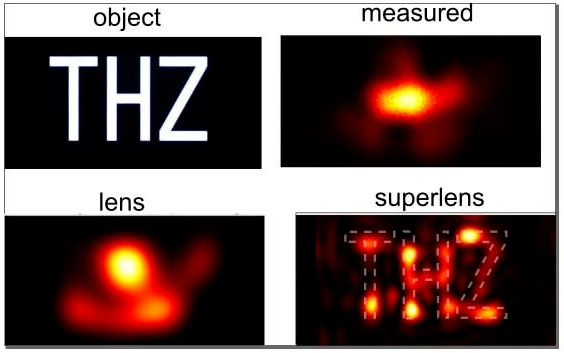


University of Sydney, Australia: Virtual superlens technology breaks through diffraction limits and improves microscopic imaging resolution
Source: Ai Optics 2023-11-11 11:00 Original link:https://mp.weixin.qq.com/s/xvFfZCxYupMWAfcwoqzsUQ
In traditional optics, there exists a phenomenon called diffraction limit, which determines the minimum distance that optical devices (such as microscopes) can distinguish between two close points or objects, limiting our ability to observe small objects using traditional optical tools. In the past, when attempting to develop superlenses that can exceed diffraction limits for imaging, there was a serious loss of image quality, resulting in the lens becoming opaque and unable to achieve clear imaging.
Recently, a research team from the University of Sydney in Australia has developed a virtual superlens technology that has successfully broken the diffraction limit and increased imaging resolution by nearly four times. The innovation of this superlens technology is expected to greatly promote the application of super-resolution microscopy technology in medical imaging, archaeology, forensic science, and other fields. This study was published in Nature Communications (www.doi. org/10.1038/s41467-023-41949-5).

Breaking through the Horizon: Optimization Policies for Virtual Hyperlenses
In the field of superlens development, most research work focuses on capturing high-resolution data. However, these data will decay exponentially with increasing observation distance, and will soon be overwhelmed by low resolution data with slower decay rates. In addition, in order to obtain high-resolution data, the detector needs to be close to the object, which may cause image distortion.
The research team adopted a strategy of placing the optical detector of the virtual superlens at a distance from the object and collecting high-resolution and low resolution data through the detector. The optimization of spatial resolution is not only limited by distance, but also depends on the balance between measurement distance and signal-to-noise ratio. Researchers have effectively avoided the potential interference of detectors on high-resolution data by measuring at a distance from objects.
Professor Boris Kuhlmey stated, "By moving the detector further away, we are able to maintain the integrity of high-resolution information and filter low resolution data using post-processing techniques." After data collection is completed, the superlens operation is performed in the computer post-processing stage.
Researcher Alessandro Tuniz stated, "By selectively amplifying attenuated or disappearing light waves, we can reconstruct the true image of an object." This process achieves the detection of encoded data in "evanescent waves" without compromising image quality by reconstructing near-field images.
The traditional materials used for manufacturing superlenses are limited in their performance due to their strong light absorption. Virtual superlenses avoid this optical loss by eliminating dependence on these materials. The measurement of the "vanishing field" is carried out in the air, rather than after structured materials, and the inverse process of attenuation is completed through numerical methods.
The research team quantitatively analyzed the trade-off between noise and measurement distance, and demonstrated a virtual superlens through post-processing experiments. They reconstructed complex images with sub wavelength features, achieving up to λ/ With a resolution of 7, an object only 0.15 millimeters wide was observed through virtual post observation technology. The experimental results of the superlens are shown in Figure 1. The image of the object "THZ" (representing the frequency of terahertz light used) shows the initial optical measurement results (upper right corner), the effect after imaging with a regular lens (lower left corner), and the effect after imaging with a superlens (lower right corner). These images were captured from a distance, significantly reducing the detector's disturbance to the electromagnetic field.

Figure 1 Experimental Results of Superlens Image Source: Institute of Nanotechnology, University of Sydney

Exploring the Mysteries of Terahertz: Prospects for the Application of Virtual Hyperlenses
The research team utilized the terahertz frequency band to develop virtual superlenses. Professor Boris Kuhlmey, a team member, explained, "The terahertz frequency band is a highly challenging field, but it is of great significance for scientific research. At this frequency, we can gain insight into the deep information of biological samples, such as protein structure, water molecule dynamics, and even details in cancer imaging."

Figure 2: Researchers Alessandro Tuniz (left) and Boris Kuhlmey in their laboratory at the Sydney Nanoscience Center
Image source: Stefanie Zingsheim
Although this technology is most suitable for terahertz near-field photoconductive devices, its application scope is far beyond that. It can be applied to any near-field experiment that can measure amplitude and phase, providing new possibilities for improving the resolution of near-field imaging equipment at any frequency.
Alessandro Tuniz said, "Our technology is not limited to a specific frequency, its potential covers a wide range of frequencies. We believe that all fields that require high-resolution imaging will be interested in this technology."
Researchers are full of expectations for the potential applications of virtual superlenses. Professor Boris Kuhlmey gave an example: "Our technology can be used to accurately determine the moisture content of plant leaves, or to non-destructive evaluate the integrity of microchips in microfabrication technology. It can even be used to reveal unknown hidden layer details in artworks, which may be extremely helpful in identifying the authenticity of artworks or discovering hidden works." In structures that are highly sensitive to environmental disturbances, such as high Q-value resonators The defects of photonic crystals and the ability of nanoscale resonators to perform near-field measurements without disturbing the sample are particularly valuable.
Alessandro Tuniz emphasized, "We have developed a practical method that can achieve the effect of superlenses without the need for actual superlenses. This technology is the first step in achieving high-resolution images, while maintaining a safe distance from the sample and avoiding any distortion of the observed object."
Original link: